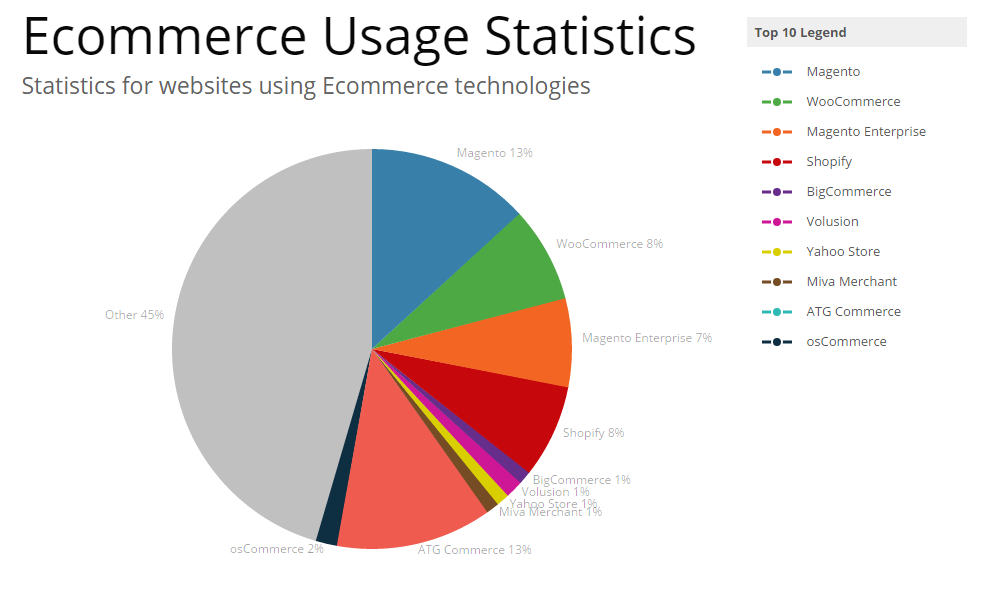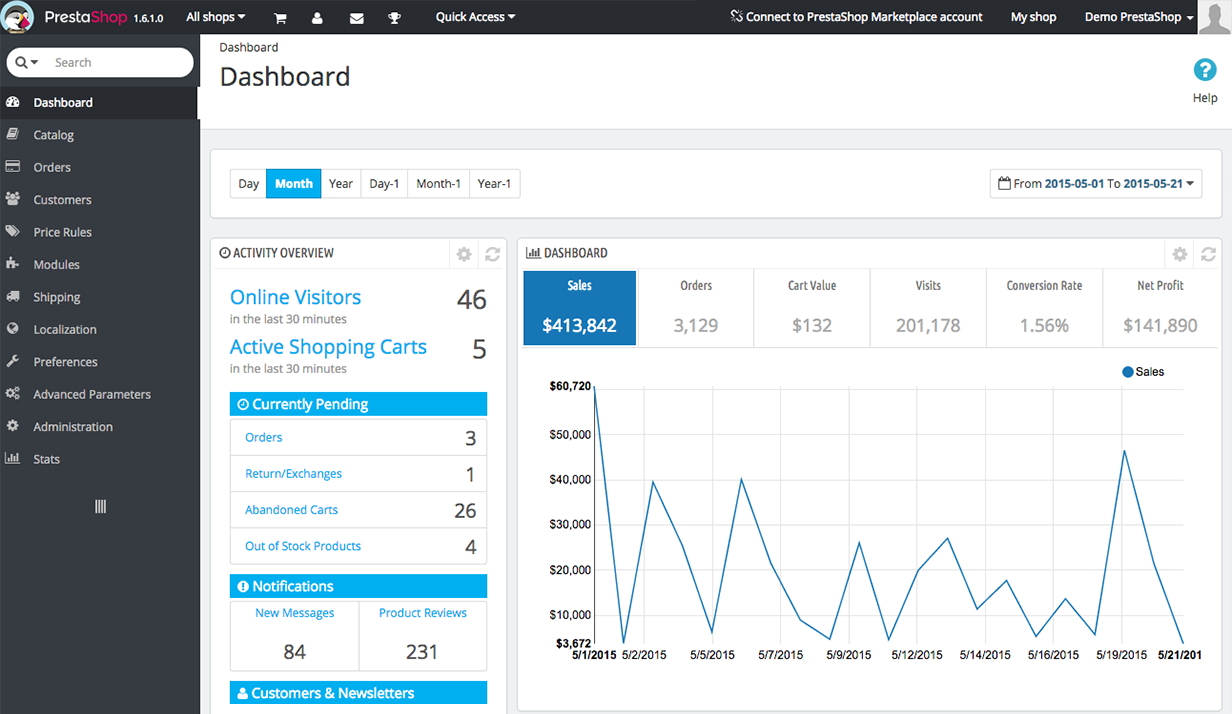Picking an ecommerce solution for a start up shop

You’ve been to trade shows, found distributors, got a warehouse, got your merchant account – now you need the perfect shop.
Is Magento going to be the right choice?
For many Magento is the first open source ecommerce system to select for their new store. It is the most popular in terms of ecommerce usage market share (see below, source Builtwith) and is the system that attracts much discussion in digital circles.
For large scale, complicated ecommerce set ups this is perfect due to the advanced native functionality and customisation opportunities available with Magento Connect extension use. For many smaller or even start-up stores, this might not necessarily be the best avenue due to the high development and hosting costs that can be incurred with running on such a system. If an ecommerce store has a reasonably simple product feed in terms of variations and attributes we would recommend one of 3 systems:
- WordPress + Woocommerce
- Shopify
- Prestashop
WordPress + Woocommerce
WordPress (PHP based) makes up 19% of the internet and has the largest pool of open source PHP developers within its community. The WordPress install is free of charge as is the Woocommerce plugin that effectively transforms an area of the WordPress blog software into a very credible ecommerce shop. Woocommerce’s growing popularity is underpinned by WordPress’s reputation as the best software for managing your own content as a non-developer. Google Analytics enhanced ecommerce measurement via this plugin then allows you to see the following shopping cart information:
- Shopping Behaviour Report
- Checkout Behaviour Report
- Product Performance Report
- Sales Performance Report
For Google AdWords product listings ads there is free plugin functionality too: https://docs.woothemes.com/document/google-product-feed/
With the smooth integration of Woothemes you can then add a logo, product feed and payment gateway details and you are ready to go.
Here is a demo of the Woocommerce web store functionality: http://demo2.woothemes.com/storefront/
Shopify
Shopify is a monthly subscription based ecommerce software system offering excellent usability in the administration side and smart looking stores based on free and paid for Shopify themes. The system is written in their own language ‘Liquid’ and is Ruby based. Here are some examples of Shopify sites: https://www.shopify.co.uk/examples. There are some fantastic apps (Shopify’s vernacular for a ‘plugin’ or ‘extension) – that Shopify themselves also contribute to which provide you with that extra stamp of quality. Here are the core features & benefits of this rising ecommerce star:
- Fraud analysis
- No transaction fees when using Shopify Payments
- Unlimited ecommerce hosting
- Integration with Google Analytics (including enhanced ecommerce for key shopping cart metrics) and Google Shopping is extremely straightforward with Shopify.
- Blog functionality alongside your store
- Discount codes
- The ‘Pro’ version ($79 per month) gives you gift cards, professional reports and abandoned cart recovery
One of the great features of Shopify is the upgrades that they make to their core functionality. The make great improvements for example to your checkout pages that you can then put live within one click.
The dashboard of Shopify is great for ecommerce managers – lots in sales & marketing data to help you keep your finger on the button:
Prestashop
Out of the 3 shop software types, Prestashop has the smallest market share at present (2.5% – source: Builtwith.com) but some ecommerce experts that we highly regard had recently met with their senior management team in France and were extremely impressed with the core of its code base – particularly in comparison to Magento.
Similarly to Magento or WordPress+Woocommerce, you can download and install Prestashop for free. You can also benefit from Prestashop being open source by being in a versatile position of there being 850,000 Prestashop community members. As with the other ecommerce systems you can choose from lots of off the shelf themes to save on front end design costs: https://www.prestashop.com/en/themes. Furthermore, there is a significant add ons market place to capitalise on code already written to enhance your Prestashop.
The Prestashop dashboard is punchy with lots of useful data:
Here is a demo of the Prestashop web store functionality: http://demo.prestashop.com/en/?view=front. It is also well worth checking out the Prestashop admin demo (http://fo.demo.prestashop.com/en/) to see how (a) advanced a Prestashop can be but also (b) how neat the admin site is in all devices.
A nice SEO feature of Prestashop is that Schema.org mark-up is natively built in.
Summary
Using the demos to all 3 platforms, you can see the advantages of using any of these ecommerce systems. Great user interface and lighter code are both benefits over the current version of Magento (with Magento 2.0 not released out of BETA). Where you have a simple product range and not much of a desire for advanced customisation we would recommend Shopify. Whilst there are Shopify Experts that you can call on, its native functionality works so well that in some circumstances working with very complicated ecommerce stores you might be better off using Prestashop as a specialist ecommerce player. Why not go past merely demo’ing WordPress and Prestashop and install them locally – upload your products and see how you go. From 1st hand experience we recently found this highly valuable when installing Magento 2.0 and seeing where we got stuck on this BETA version with stress testing advanced product types…we then knew in theory that it wouldn’t technically be right for the shop in question.
Now you just need to pick a vertical for your new shop – so do some homework on ecommerce trends to find where the retail growth could be for you.





